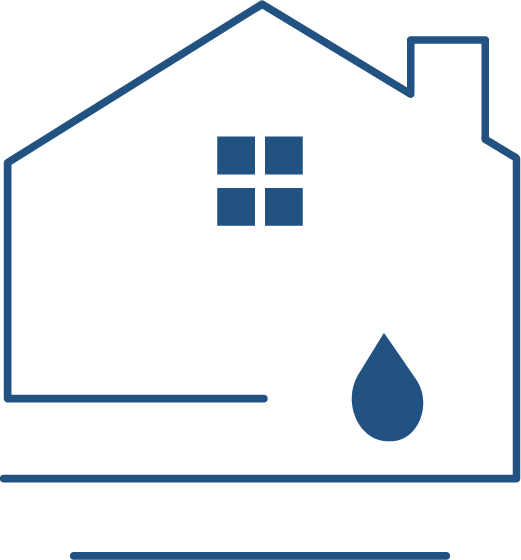When most people think of mold, they picture damp basements or neglected crawlspaces—but your attic can be just as vulnerable. One of the most overlooked causes of attic mold is poor attic ventilation. When your attic can’t breathe, moisture gets trapped—and mold quietly takes over.
Here’s why attic ventilation is crucial, how it helps prevent mold, and what you can do to protect your home.
1. Why Attic Ventilation Matters
Your attic is exposed to extreme temperature shifts year-round.
-
In summer, temperatures can exceed 150°F.
-
In winter, warm indoor air rises and meets the cold underside of the roof, leading to condensation.
Without proper airflow, this moisture has nowhere to go—and creates an ideal breeding ground for mold. Common areas mold targets include:
-
Roof sheathing
-
Joists and rafters
-
Insulation backing
-
Nails and fasteners
Attics without ventilation become humid, enclosed spaces where mold thrives.
2. How Poor Ventilation Leads to Mold Growth
Here’s how attic mold begins:
-
Warm air from bathrooms, kitchens, and laundry rises into the attic.
-
If it’s not vented out, it condenses on cool surfaces.
-
Humidity climbs—often above 60%, mold’s ideal range.
-
Mold spores activate and spread through wood, dust, and insulation.
This is especially common in homes with:
-
Blocked soffit vents (Check out our glossary here!)
-
Missing ridge or gable vents
-
Bathroom fans venting into the attic instead of outside
3. Warning Signs of Poor Attic Ventilation
Not sure if your attic has ventilation issues? Look for these red flags:
-
Musty smell in the attic
-
Dark spots or streaks on wood and insulation
-
Condensation on nails or metal hardware
-
Hot, stuffy air even on cool days
-
Ice dams forming on the roof in winter
These symptoms point to trapped moisture—an early sign of potential mold growth.
4. How Proper Ventilation Prevents Mold
A healthy attic needs balanced airflow—dry air in, moist air out. A proper ventilation system includes:
-
Soffit vents (intake): Allow cool air to enter at the roof’s base
-
Ridge or gable vents (exhaust): Let hot, moist air escape
-
Vent baffles: Keep airflow unobstructed past insulation
-
Exhaust fans: Make sure bathroom or dryer vents go outside, not into the attic
This setup regulates attic humidity, preventing condensation and mold formation.
5. What You Can Do to Improve Attic Ventilation
Even small steps can make a big difference. Here's where to start:
-
Inspect your attic: Look for discoloration, damp spots, or blocked vents
-
Feel the airflow: On a windy day, air should move through soffits and exit via ridge vents
-
Clean or add vents: Clear any blockages or consider installing more
-
Check insulation: Ensure it's not covering intake vents and is properly sealed. (Check out why attic insulation matters here.)
-
Schedule an inspection: A professional can identify airflow gaps and mold risks
Final Thoughts
Your attic may be out of sight, but it shouldn’t be out of mind. With proper ventilation, you can drastically reduce the risk of mold, protect your insulation and roof, and improve your home’s overall energy efficiency and air quality.
Need help checking your attic's ventilation or inspecting for mold?
Our team offers expert attic assessments and long-term mold prevention solutions tailored to your home.
Schedule Your Free Inspection Today
Get in touch by filling out our contact form or click here to schedule a call directly.



